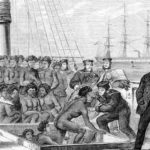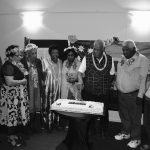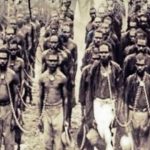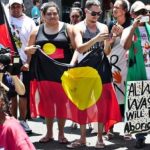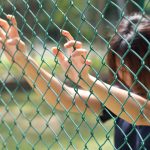Forgotten Australian Slavery: An Interview with ASSI-PJ President Emelda Davis
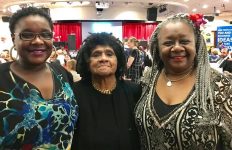
Benjamin Boyd was a wealthy entrepreneur who arrived in NSW in 1842. The Scottish-born coloniser bought large tracts of land around Eden, in southern NSW. Boyd had concerns about securing labour to work on his properties, so he undertook Australia’s first foray into importing slave labour.
In 1847, Boyd shipped in 65 men from islands in modern-day Vanuatu and New Caledonia. Some of these Pacific Island men were said to have come willingly, but many were tricked, coerced and even i in a practice known as blackbirding.
A strange land
On arrival, these men, who couldn’t speak English, made their marks on contracts that bound them to five years of work. They were to be paid around a quarter of what Europeans could expect, which would technically class them as indentured labourers.
The local magistrate in Eden refused to countersign the documents, as the men clearly had no idea what they were doing in the country. Most of the South Sea Islander men escaped not long after arrival. Boyd, undeterred, shipped in another 54 men. Once again, the venture was a failure.
After the colonial society in Sydney realised what Boyd was up to, the NSW Legislative Council amended the Masters and Servants Act to ban the practice. Britain had already abolished slavery throughout the British Empire, with the passing of Abolition Act in July 1833.
Slave-like conditions
The men brought over by Boyd were the first of an estimated 62,500 South Sea Islander people brought to Australia to work as indentured labourers. Although NSW brought a halt to blackbirding, the Queensland government allowed the practice to flourish.
In 1863, the first ship carrying 67 men from Vanuatu arrived in Moreton Bay. For the next forty years, ships would continue to arrive carrying cargos of people to work within the sugarcane, pastoral and maritime industries in conditions that were akin to slavery.
Corporal punishment was meted out at the sugar plantations. A system of segregation was established, where South Sea Islanders couldn’t mix with the rest of society. Around 15,000 died within their first year of arrival. When they did, they were buried in mass unmarked graves.
In 1901, in a further act of cruelty, the newly appointed Australian federal government passed the Pacific Island Labourers Act, which sought to deport the 10,000 South Sea Islander people still in the country. The legislation was part of what later became known as the White Australia Policy.
The majority of South Sea Islander people were sent back to the more than 80 Pacific Islands from which they were taken. The government paid for the mass deportation using the indentured labourer’s own wages, which had been misappropriated by the Queensland government.
Resilience in the face of injustice
After challenges were mounted against the mass deportation, around 2,500 South Sea Islander people were allowed to remain in the country. Emelda Davis is a second generation Australian South Sea Islander. Her grandfather was kidnapped from an island in Vanuatu.
Sydney Criminal Lawyers® spoke to Emelda Davis, the president of Australian South Sea Islanders – Port Jackson, about the hardship faced by those blackbirded to NSW, the legacy of the mass deportation, and the struggles of the Australian South Sea Islander community today.
Firstly, Emelda, you’re second generation Australian South Sea Islander. Can you tell me about what happened to your grandfather, Moses Toupay Enares?
My grandfather was brought here from Tanna Island. He was taken off the beach at the age of 12. My grandmother was interviewed back in 1977 by professor Clive Moore. And she retold this story to him.
He was put in the hold and ended up in Far North Queensland. He didn’t speak English. But they encouraged, enticed and coerced them. And then he was brought to Queensland. And he never went back to Tanna.
So, he was only 12?
He was literally 12 years old. He died in 1961, when I was born.
In 1847, Benjamin Boyd first blackbirded a group of men and took them to Eden. He eventually brought 119 South Sea Islander men to NSW. This year marks 170 years since that happened.
How would you describe the NSW blackbirding experience?
The documentation isn’t as detailed as in Queensland. We have a lot of families that are from NSW, and are believed to be descendants of some of those 119.
But the thing is, we have to do more oral history research. You have the Togo family. And the Watigo family, who are Aboriginal descent also.
It’s believed that these men were brought here against their will. And they escaped and walked back to Sydney in search of a passage home.
At least 50 percent of them made it home, as professor Clive Moore indicates. But then, the rest of them died. One drowned in Sydney Harbour – over on the North Shore.
Is there a theory about what led these men to escape so soon?
Well, you can only imagine being taken against your will, or coerced, and put onto a ship. These people never spoke English, so what’s the form of communication.
We know from the Frontier Wars here, and when Captain Cook arrived in Australia, what the scenes were like. So, I can only imagine what could have happened to our people when these blackbirders arrived on their island.
They literally took the entire male population from some community groups. They rounded them up and put them in the hold.
Apparently, these men were found walking in Sydney streets naked. They were in search of their passage home. They sort of had an idea, being Indigenous peoples. A tracking sense, I would say, in terms of being able to navigate the land, or pay attention as to your surroundings.
We can only interpret what they may have been feeling. But, as history has it for many Indigenous cultures and experiences, there is evidence based through imagery and we’ve yet to do more research.
I met a professor, who spoke about Sydney port being quite the sight, because the ships were arriving with dead cargo. And there is actually caricatures of these ships. They were called the coffin ships, because people were arriving with shiploads of dead people.
From the Pacific Islands?
Yes.
In 1863, the practice was taken up in Queensland. Around 62,500 South Sea Islander people were eventually brought to Australia, many to work in the sugarcane plantations.
Technically, these people are referred to as indentured labourers, as they were paid very small wages.
Do you consider it was a form of slavery?
Of course, most definitely it was a form of slavery.
American slavery was abolished in 1863 to 1865. There were laws. There were protests. There were the Abolitionists: people who advocated for the rights of people of colour, or slaves.
And they also advocated for the right to actually be included to work as a part of these industries, which were sugar, pastoral and maritime industries.
The white people had reasons why they either supported, or were on the side of human rights for these people.
The British set their sights on the Pacific: a very lucrative trade. They were looking at establishing a form of colonialism. And it was the Empire-type approach to dominating countries.
They coined it as indentured labour. But we know very well these people were paid significantly less.
And they didn’t have an understanding of what they were either being coerced to do, or end up doing in giving up their entire lives, societies, cultural practices and families in Vanuatu and the Solomons. And in those 80-odd islands.
You’re talking about people who had just seen white people for the first time.
And what sort of conditions did these people face when they arrived in Australia and they were sent to the plantations?
I’ve just been speaking to a gentleman, Gordon Johnson, who in 1963 was working as a cane farmer, when he was 13 years old.
He’s got some very clear documentation of what his grandfather went through, because his mother shared those oral histories. And he’s physically written it all down for their families.
His grandfather was taken from the Solomons. He was brought here to Far North Queensland, Bundaberg. And he was just continually physically abused. He was hit with cane knives and sticks.
It might have been a form of communication for these plantation owners, because they couldn’t speak English. So, they were just going to knock people around, and push them into situations – coaching them on how to cut sugarcane.
Gordon experienced the same thing. As a 13-year-old, if he didn’t cut cane in a certain way, then he got flogged, literally with the butt end of a cane knife.
That’s just one example of an oral history. And there are other examples that professor Clive Moore refers to. We can see throughout Queensland and NSW, that the bodies lay scattered throughout the nations.
There was no respect or consideration. And they were considered heathens, and that’s how they were treated.
But, then you’ve got stories about the fact that these people were cooperative – I think I would be cooperate in a foreign land too- and were easy to work with. So, I guess resigning to the fact that there was no choice.
Oppression and things like that affect your survival, your means to survive with the hope of getting back to your island.
They were very poor and very sad. My grandfather worked tirelessly. I have memories of my grandmother also doing agricultural work, picking peas and things like that. It was a hard life for the people that were brought here.
In 1901, the Pacific Island Labourers Act was passed, which was an attempt to deport the remaining South Sea Islander people. This is the only example of a western democracy passing legislation to enable the mass deportation of one ethnic group of people.
What was it like for these people who had come to Australia and worked so hard to then be told they had to leave?
Imagine, you’ve established your life over a period. You’ve resigned to the fact that your family has gone. There was no other means of communication with them.
You’ve established a new life with some Indigenous and some non-Indigenous cultures, depending on what opportunities were there for you as part of this whole slave history: working on plantations, what transpired, the type of plantations and the overseers.
The scenes at the docks were horrific, with people being literally torn apart from their families.
The Aboriginal Protection Act absorbed us: so in missions and stations, and in the workforces. It’s a very complex situation for our mob.
To start to unpack and hear some of the stories out there in the community, it’s quite unsettling. And the government really does have to commit to rectifying some of these wrongs that have occurred to our mob.
But again, history has it where it was hard luck for many people.
And what would you say the impact of that mass deportation was like for those who remained?
Some families that left, the men would take the children, and the women may stay. And then you had cases where the entire family would go, with people who were British citizens. There was no real analysis of those communities that were being deported.
And then you had people that came here at a certain time that were allowed to stay. You had a Pacific Island group formed in Mackay in 1901. And they lobbied to have these people stay – three thousand signatures. They went to Deakin and spoke to him about allowing people to stay. And then some were allowed to stay.
So, I couldn’t imagine just how traumatic that is. And still today, people are suffering the generational trauma, and trying to piece their families together.
I’m 55 years old and I don’t know where my grandfather’s family are. I know it is in Middle Bush, Vanuatu possibly. But, even when I got there, people would come and say, “You’re my family.” But, we have no real way of placing that.
We were very fortunate that grandfather gave all his children an island name each, which we tried to match. But, now it’s a very common thing to have certain names. So, it’s been very hard.
He escaped deportation by leaving Queensland and walking to Sydney, just following the coastline to escape. Because what was the point? Who was he going back to? Where was he going back to?
Some people were returned to their islands. But, others had never seen the islands before. There are stories about cultural warfare.
As Gordon said to me yesterday in his oral history, they thought his grandfather was a ghost. It was 10 years and he went back to the Solomons. And then he was banished, because they couldn’t believe it was him. He was a chief. He had lots of land. He had two wives. But, all of that was gone when he returned.
And they couldn’t believe it. The cultural practice was that he was a ghost. So, they didn’t accept him. He went to Vanuatu and then he got blackbirded again. You can’t win.
Some of the Pacific islands had up to half of their adult population of men blackbirded. What has the legacy been like for these island communities? What is the impact like today?
Entire male populations were taken off some of the smaller islands, which led to devastation, because the mothers and children were left.
When you go to Vanuatu there’s a rock, called the Moaning Rock, and you can hear the women crying, when the wind blows – crying for their men. It’s so eerie.
The spirit is still strong. The cultural practices are still very strong today.
And at some islands you can feel a sense of sorriness. It’s like depletion even. It’s like the soul has gone.
And lastly, there are about 300 to 400,000 South Sea Islander people living in Australia today, and an estimated 70,000 are descendants of those people who were blackbirded.
In 1994, the federal government recognised the Australian South Sea Islander community as a distinct cultural group.
What is life like for the Australian South Sea Islander community today? What sort of circumstances is the community facing?
For me personally, I’m very fortunate in Sydney. And in particular, NSW is a very progressive state in terms of Sydney, politics and activism. And you’ll find a lot of our leadership has came out of NSW in the past, since the 70s.
But, life is still very hard, because we don’t have an overarching commitment from the federal government action plan. So, it’s OK for us to do all this fantastic advocacy work, and collaborate with amazing human right-thinking people who come to the table.
But, we need the government to commit as they have done with certain aspects of Aboriginal Australia. There needs to be a national focus, because of our children. One family lost seven children in one year to suicide. That’s how rife it is in our community.
And you go to Queensland, and all these pockets of the country, and people are suffering mental illness. The elders are not cared for. And because there isn’t anything, we fall between the cracks, when it comes to multiculturalism and Aboriginal Australia.
Because, they put us in as contemporary South Sea Islanders, and don’t cater for us as a distinct cultural group. And we find it extremely difficult, and suffer the same disadvantages as Aboriginal Australia.
So, we’ve got identity issues. If you are dual heritage – Aboriginal and South Sea – it’s fantastic. You can get that kind of commitment.
But, the government has to sit up and take notice of this. With the Black Lives Matter movement that’s happening at the moment, we’re going to have to look at joining forces with some really robust international causes to get our voices heard by the government, and by the United Nations.
All this stuff needs to be considered, especially in this time and year, about some of the challenges that communities are facing. There are communities undermined worldwide at the moment.
Emelda, thanks very much for taking the time out to speak with us today.
Thank you.


